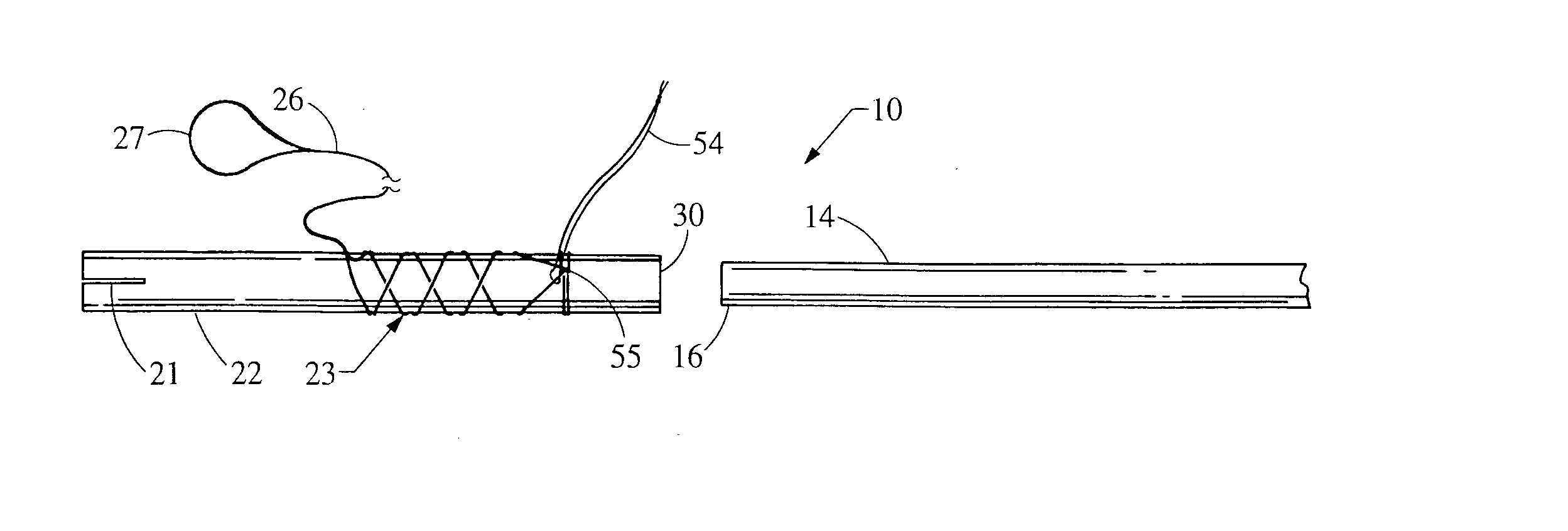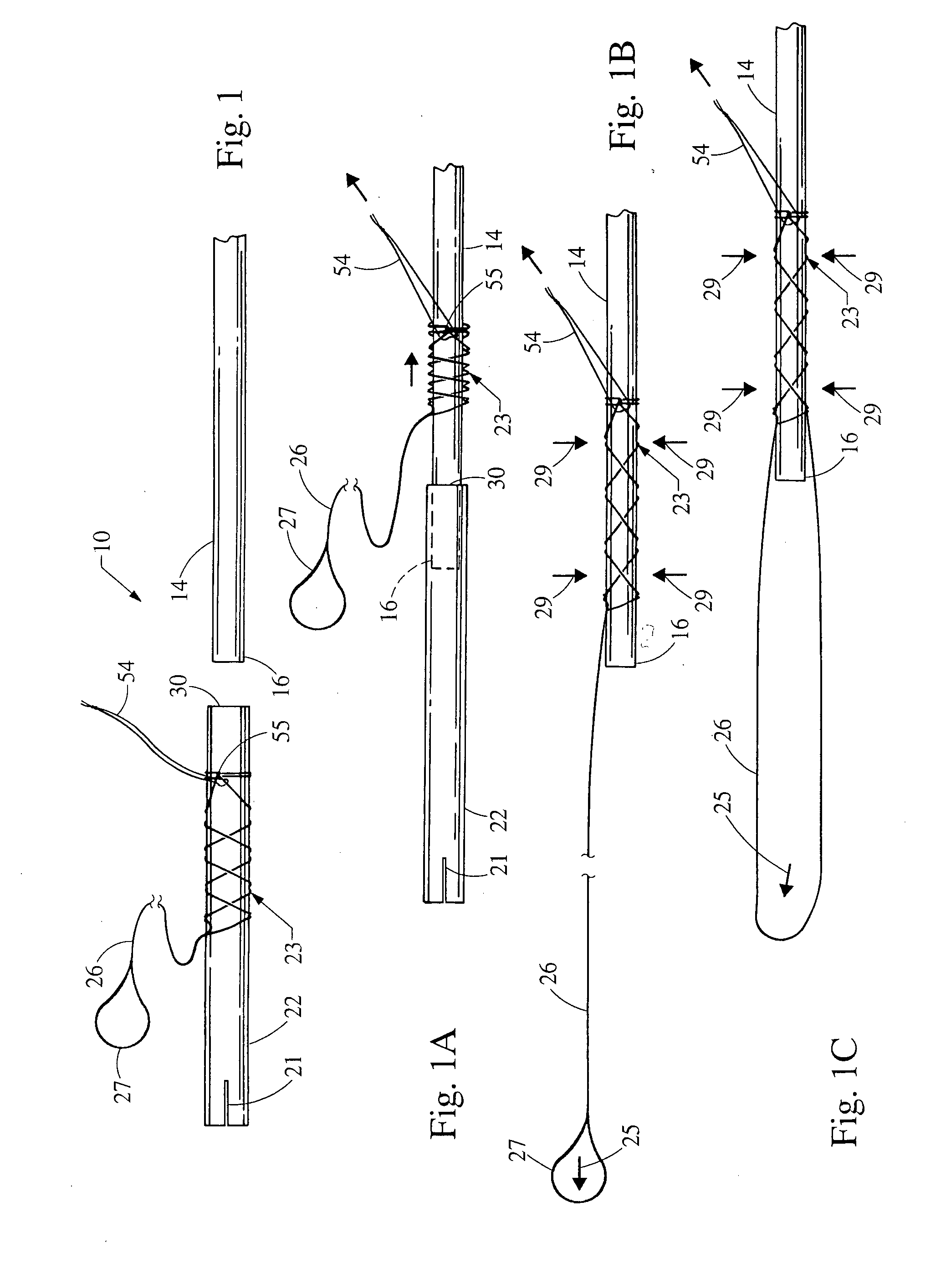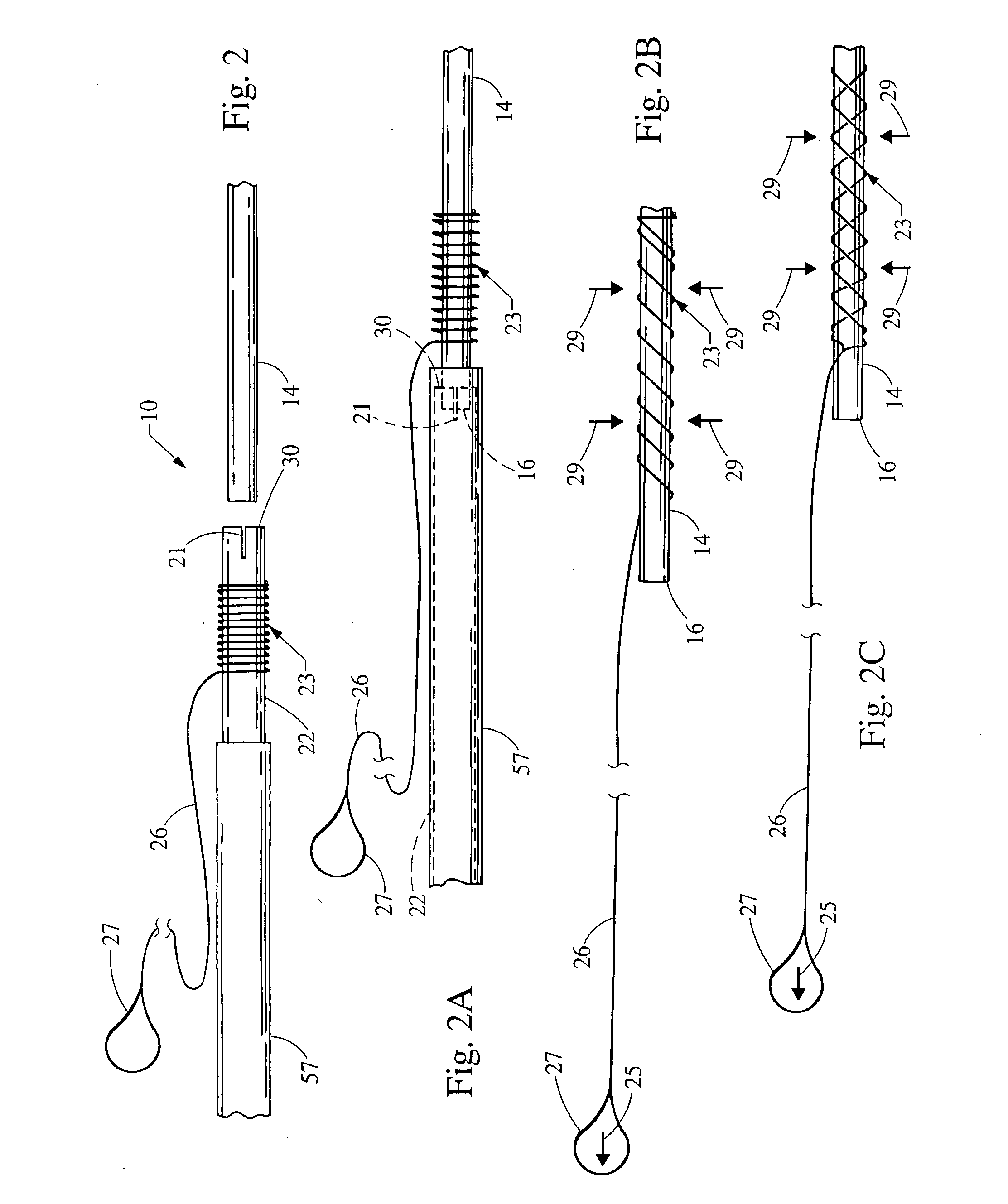Device for removing an elongated structure implanted in biological tissue
a biological tissue and elongated technology, applied in the field of methods and surgical devices, can solve the problems of difficult to remove the lead from the heart area without causing trauma to the area, severe damage to the vein, and difficulty in removing the elongated structure, etc., and achieve the effect of improving gripping
- Summary
- Abstract
- Description
- Claims
- Application Information
AI Technical Summary
Benefits of technology
Problems solved by technology
Method used
Image
Examples
Embodiment Construction
[0042] With reference first to FIGS. 1-16, a device 10 for removing or extracting a previously implanted elongated structure 14 from a patient is shown. The elongated structure 14 to be removed has an outside dimension or diameter, a proximal end 16 and a distal end located within the patient. The distal end of the elongated structure 14 may be located within or outside the vascular system of the patient. For example, when the elongated structure 14 is the cardiac pacemaker lead, the distal end will be located within the vascular system of the patient, and in particular, within a chamber of the patient's heart (such as in an atrium or ventricle of the heart). Alternatively, when the elongated structure 14 is a defibrillator lead, the distal end will be located either in or about the heart of the patient. The distal ends of other types of elongated structures 14 may not be and need not be near the heart at all; the device 10 will still be useful for removing them. The proximal end 16...
PUM
 Login to View More
Login to View More Abstract
Description
Claims
Application Information
 Login to View More
Login to View More - R&D
- Intellectual Property
- Life Sciences
- Materials
- Tech Scout
- Unparalleled Data Quality
- Higher Quality Content
- 60% Fewer Hallucinations
Browse by: Latest US Patents, China's latest patents, Technical Efficacy Thesaurus, Application Domain, Technology Topic, Popular Technical Reports.
© 2025 PatSnap. All rights reserved.Legal|Privacy policy|Modern Slavery Act Transparency Statement|Sitemap|About US| Contact US: help@patsnap.com



